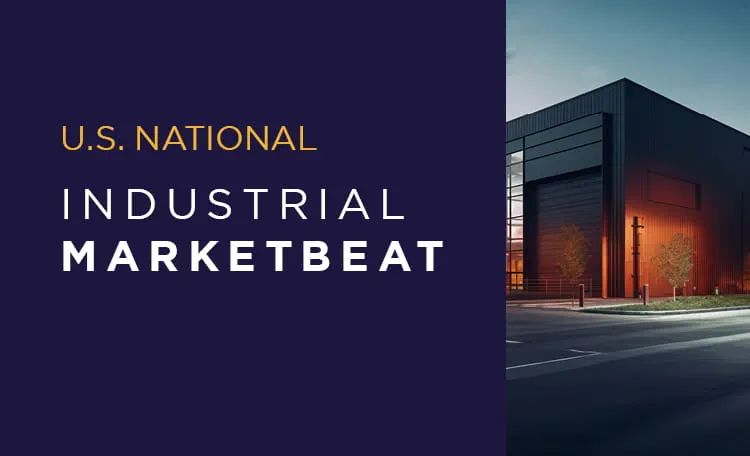This new first-generation space is in high demand across markets as this product is intentionally designed and developed to meet the spatial needs and modern amenity requirements of today's industrial occupiers. New leasing fundamentals continued to highlight the desire for this newer product, as new leasing figures depict an outsized share of activity in product delivered after 2020. With construction starts down across the Midwest, newer product should be more quickly absorbed as demand rebounds in the coming quarters.
One segment of the Midwest industrial inventory to watch is second-generation product built between 2000-2019. This subset of the market currently accounts for 21.1% of the region’s industrial inventory, which includes eight major Midwest markets: Chicago, Indianapolis, Cincinnati, Columbus, Kansas City, St. Louis, Minneapolis, and Detroit. It contains a relatively limited amount of available space compared to third-generation product (built before 2000) and new first-generation space (built after 2020). As tenants that occupy space in second-generation product with upcoming lease expirations potentially relocate into newer construction, the available supply of second-generation space is primed to expand, providing tenants and investors opportunities to reinvest in this strong performing sector of industrial inventory.
The industrial inventory across the eight major Midwest markets is weighted heavily towards older product with 68.4% of inventory built prior to 2000. As the flight to quality trend continues, much of this space may not be suitable for certain users who require more modern space. On average, these buildings have lower clear heights and smaller footprints that modern second-generation and new first-generation buildings have.
Modern second-generation and new first-generation product account for 31.6% of the region’s industrial inventory with available space largely located within recently completed buildings, which command higher rents. Newer product tends to be larger, with new first-generation buildings that are over 500,000 sf accounting for 55.9% of inventory. The modern second-generation building subset had an inventory that is more evenly spread, with 64.8% of inventory over 250,000 sf.
Therefore, this could place greater tenant demand focus and demand on available space within modern second-generation buildings, which are still highly functional due to design elements such as higher clear heights, ample dock doors and more functional floor plates. With the availability rate for this subset of buildings at 5.2% as of Q2 2024, rents should remain competitive.
Modern second-generation space across the Midwest is incredibly limited, as of Q2 2024 there was only 43.2 msf currently available. Due to the typically higher costs of newly delivered first-generation buildings, modern second-generation buildings, which offer more competitive costs, will always attract demand from rent-conscious occupiers. Therefore, creating opportunity to investors. However, with the limited amount of available supply within this subset these conditions have yet to take hold.
|
New leasing through mid-2024 has been heavily concentrated within second and first-generation industrial buildings, with 73.1% of activity concentrated in buildings built since 2000. Further supporting the notion that tenants are demanding newer, more functional space. Despite this, the considerable decline in construction starts over the last several quarters have effectively capped new inventory despite continued tenant demand, that dwindling supply may ultimately benefit second-generation spaces. |
There is currently 136.3 MSF of leased space within modern second-generation industrial product across the Midwest that is set to expire between 2025-2027, equating to 21.0% of second-generation inventory. Historically speaking, since 2018, the share or renewal activity as a percentage of all deals is 34.5%. Assuming this holds true, there could be as much as 90.0 msf of tenant movement over the next three years, creating more second-generation vacancy and opportunities for strategic owners and investors. |
Most major Midwest industrial markets have a modern second-generation inventory of over 20.0%, which mirrors the overall region’s share of inventory of 21.1%. In terms of availability, all markets had the least amount of available space within this subset, with availability rates of under 10.0%.

